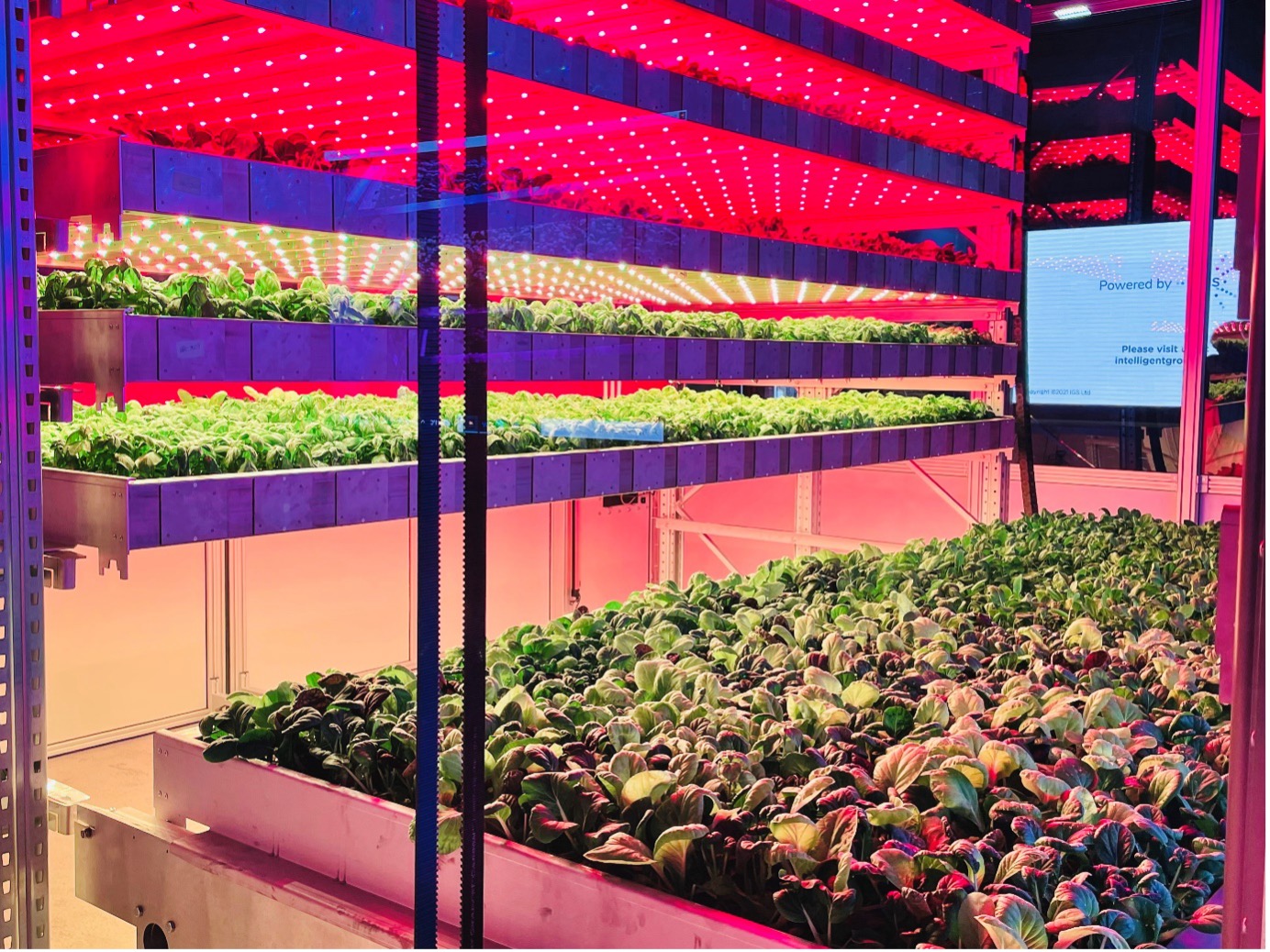Click to watch the full video on YouTube.
Supply chain carbon emissions (scope 3) are an important subject for many organisations nowadays. And some in the hospitality industry are starting to be asked by their clients how the food carbon footprint could be reduced.
One development that has environmental advantages is vertical farming using hydroponics. Hydroponic crop growth is able to tackle the issue of growing out of season in areas of water scarcity.
Vertical farming using hydroponics has several advantages compared to traditional farming methods. Firstly, it allows for the efficient use of space by stacking crops on multiple levels, producing a higher yield per square metre than traditional farms which allows crops to be grown in urban areas where land is limited. And transportation emissions are reduced when food is grown closer to the market that it serves.
Survey and Test’s Lydia is studying Architecture at Cardiff University and as part of a Master’s thesis designed a building in Kochi, India to provide crops to an urban community in an area of low water availability.
‘The great thing about growing crops in this way is that anyone can do it’ explains Lydia, ‘it could be a vertical farm somewhere or the balcony of a flat in a dense urban area with little rainfall’.
Hydroponics eliminates the need for soil, which can be contaminated with pesticides and other harmful substances. By growing plants in nutrient-rich water solutions, vertical farms can ensure a cleaner and healthier growing environment and reduces the risk of soil erosion and depletion.
‘One of advantages of hydroponics is that it is simple to construct from re-used materials’ continues Lydia, who made a prototype from partly used materials that were to hand.
Hydroponics allows for precise control over the growing conditions allowing farms to adjust factors such as temperature, humidity, and lighting to optimise plant growth. This level of control minimises the risk of crop failure due to unfavourable weather conditions or pests.
The process requires significantly less water compared to traditional farming because the water used in hydroponic systems is recirculated and can be reused, reducing the waste. This is especially important in regions facing water scarcity or drought.
Reduced dependency on pesticides and herbicides is another clear advantage. With the controlled environment of vertical farms, the need for chemical intervention is greatly reduced. This not only promotes healthier produce but also reduces the environmental impact associated with chemicals such as the impact on our soil, water table and insects.
The advantages from year-round production are clear. Sourcing out of season tends to considerably increase carbon emissions, mainly from transporting produce from another part of the world.
With the ability to manage artificial light and climate control, vertical farms can overcome seasonal limitations and produce crops consistently throughout the year. This helps to stabilize food supply and reduce reliance on imported produce.
So overall, vertical farming using hydroponics offers numerous advantages, including efficient space utilization, improved plant health, precise control over growing conditions, water conservation, reduced chemical dependency, and all year-round production. These advantages make it a promising solution for sustainable and resilient food production in the future.



